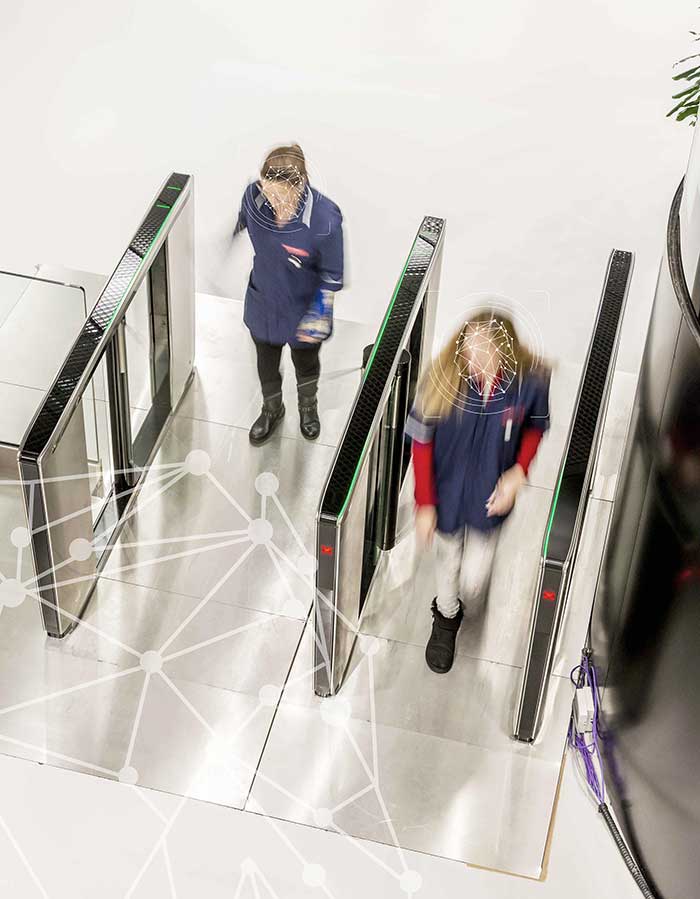The building and architecture industries have seen sweeping changes in recent years, accelerated by Covid, and borne out of a need to safely and hygienically handle higher traffic volumes through bigger and taller buildings.

Boon Edam Australia engineering supervisor, Kaleem Faisal has seen these changes first-hand over the past five years, and says technology is only going to further accelerate in the years ahead.
“As little as five years ago, I was seeing more physical security guards, with individual security for each tenant in a multi-tenant building. Now, security products offering intelligent monitoring are allowing management to monitor staff and visitors, deter unauthorised entry, and reallocate security guards to optimise their value,” says Faisal, who works as an engineering supervisor in Victoria for Boon Edam Australia, part of the global Royal Boon Edam group.
Boon Edam globally is celebrating 150 years of high quality architectural revolving doors and entrance security solutions, which now incorporate new technologies such as facial recognition and lift destination control (Boon Edam has a partnership with Schindler Lifts to create a seamless entry through speed gates, into an elevator, and through to the destination floor).
“We learnt a lot during Covid, and it was clear that workplaces were going to change for good. Even now, most people still like to keep social distancing when entering buildings, and this is done more easily with speed gates, compared to swing doors or manned security points,” he said.
“Managers of companies are often keen to monitor when their employees arrive and leave work, and which facilities they are using, so they can efficiently plan space usage and resources, and take into account emerging new patterns including working from home. This used to be a painstaking, manual process, but with security entrances like speed gates, all that data is made easily available.”
Looking ahead
Thinking about what changes will occur in 2023 and beyond, Faisal says that people are becoming increasingly comfortable with new technologies, and the ones with the greatest uptake are typically the most ‘human-friendly’.
“Covid forced us all to look at touchless entry options, so technologies that may have felt strange before suddenly became the norm. In particular, people have become more comfortable with facial recognition, and are seeing lots of advantages to having it in place,” he said.
“Think about the morning rush to the office – you’ve usually got a work bag, maybe you’re holding a cup of coffee too. If you have to take your ID badge out, there’s a chance you’ll drop your bag, or worse – your coffee! But with facial recognition, you can walk straight through and have your ID verified as you go. Advanced, human-friendly technologies like these will lead the way in the future.”
Futuristic looks impress users
“Over the past five years working with Boon Edam Australia, it has become clear that user-friendliness is a major consideration for clients. It it’s easy for management and workers to use the technology, it’s far more likely they’ll adopt it in their building. But an interesting additional benefit has been the futuristic look of some of the latest revolving doors and security entrances we’ve installed,” says Faisal.
“Clients are surprised at how futuristic the technologies look, with some commenting that it’s like being in a James Bond or science-fiction movie!”

Revolving doors and security speed gates can both look highly futuristic, adding further appeal to integrating them into a modern building or facility
“For specifiers, it’s all about meeting the right specifications. They don’t end up using the product, but they want to ensure their client is happy, and that all requirements are met. We’ve created good relationships in this area, because Boon Edam products are ‘fully loaded’ – meaning they come with the full range of features available on that type of product, and they can then be customised to suit each unique application,” he says.
Top image: Facial recognition integrated into security speed gates creates a human-friendly and seamless entry solution, says Kaleem Faisal

